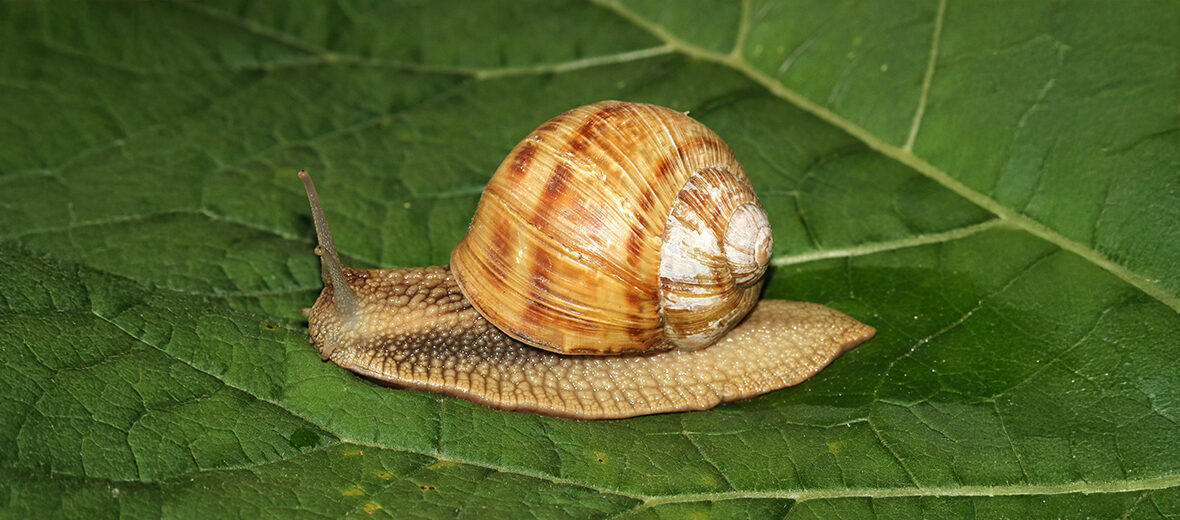
The burgundy snail, aka Roman snail or escargot, is a large, land-snail hailing from Europe. They are a synanthropic (live near humans) species of snail that may or may not be threatened by the logging industry. However, they do not face any other known threats. With an abundant and stable population trend, the IUCN lists these snails as Least Concern.
First the Stats…
Scientific name: Helix pomatia
Weight: Up to 1.59 ounces
Length: Up to 3 inches, with up to a 2 inch shell
Lifespan: Up to 35 years
Now on to the Facts!
1.) These snails are actually edible, if they’re cooked.
2.) They prefer forests, shrublands, and gardens.
3.) Burgundy snails are hermaphrodites (possessing both male and female reproductive organs).
4.) During the colder winter months these snails will aestivate (a kind of hibernation).
5.) These snails are among the few known species that are capable of creating a calcareous epiphragm (a temporary, mucus-based seal) to seal the opening of its shell.
But wait, there’s more on the burgundy snail!
6.) The intestinal juices contain large amounts of aryl, steroid, and glucosinolate sulfatase activities.
7.) Up to 45 eggs are laid and hatch in up to 4 weeks.
Did you know…?
Cannibalism occurs under unfavorable conditions, with juveniles eating the smaller of their brood.
8.) These snails are particularly popular in French cuisine.
9.) In the English language, they are called by their French name escargot when used in cooking.
10.) Although these snails are highly prized as a food item, they are difficult to cultivate and are rarely farmed commercially.
Now a Short Burgundy Snail Video!
This video talks about snails in general.
Be sure to share & comment below! Also, check out the Critter Science YouTube channel. Videos added regularly!

Want to suggest a critter for me to write about? Let me know here.
Some source material acquired from: Wikipedia & IUCN
Photo credit: George Chernilevsky



